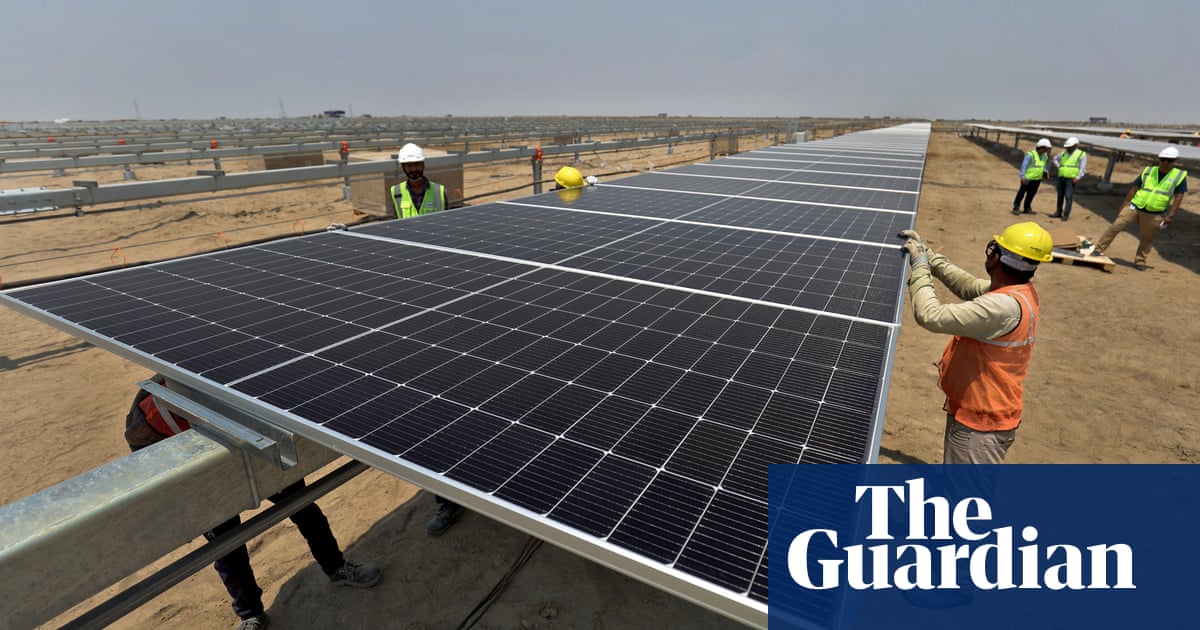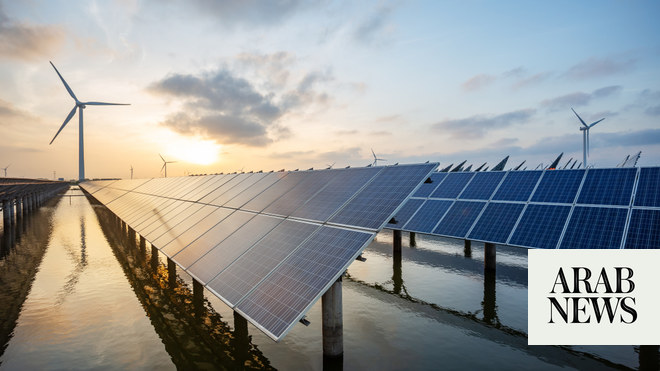
Renewable energy accounted for more than 30% of the world’s electricity for the first time last year following a rapid rise in wind and solar power, according to new figures.
A report on the global power system has found that the world may be on the brink of driving down fossil fuel generation, even as overall demand for electricity continues to rise.
Clean electricity has already helped to slow the growth in fossil fuels by almost two-thirds in the past 10 years, according to the report by climate thinktank Ember. It found that renewables have grown from 19% of electricity in 2000 to more than 30% of global electricity last year.
“The renewables future has arrived,” said Dave Jones, Ember’s director of global insights. “Solar, in particular, is accelerating faster than anyone thought possible.”
Solar was the main supplier of electricity growth, according to Ember, adding more than twice as much new electricity generation as coal in 2023.
It was the fastest-growing source of electricity for the 19th consecutive year, and also became the largest source of new electricity for the second year running, after surpassing wind power.
The first comprehensive review of global electricity data covers 80 countries, which represent 92% of the world’s electricity demand, as well as historic data for 215 countries.
The surge in clean electricity is expected to power a 2% decrease in global fossil fuel generation in the year ahead, according to Ember.
“The decline of power sector emissions is now inevitable,” said Jones. “2023 was likely the pivot point – peak emissions in the power sector – a major turning point in the history of energy. But the pace of emissions falls depends on how fast the renewables revolution continues.”
Although fossil fuel use in the world’s electricity system may begin to fall, it continues to play an outsized role in global energy – in transport fuels, heavy industry and heating.
A separate study by the Energy Institute found last year that fossil fuels including oil, gas and coal made up 82% of the world’s primary energy.
World leaders are aiming to grow renewables to 60% of global electricity by 2030 under an agreement struck at the UN’s Cop28 climate change conference in December.
This would require countries to triple their current renewable electricity capacity in the next six years, which would almost halve power sector emissions.










